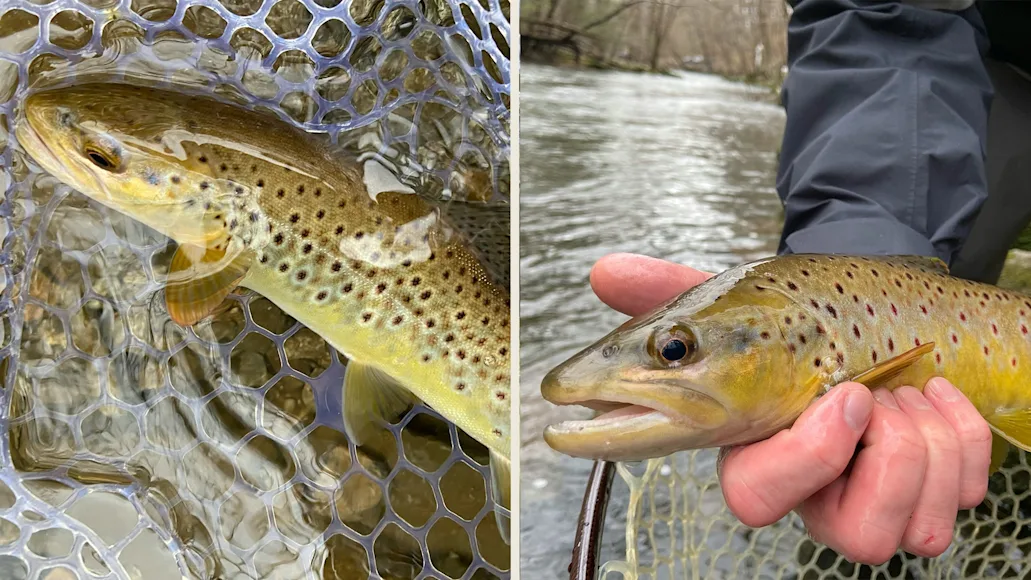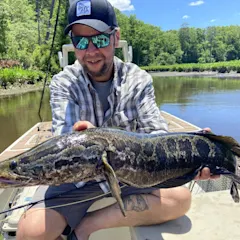Growing up in the Northeast, I lived for spring trout season
. It was always bittersweet when the summer sun made my local streams too hot to fish, even though it meant moving on to smallmouth bass, catfish, and a bunch of my other summer favorites. Although in many parts of the country trout fishing conditions remain optimal all summer, I had to wait until fall to get back after those browns and rainbows, and I learned quickly that while it might be prettier out there with the changing leaves, fall trout fishing is more challenging.
Even if you live in the Rockies, where rivers run cold most of the summer, you can’t hide from the ever-increasing lack of daylight and winding down of food sources. Both factor heavily into your approach in the fall. So, if you’re looking for action between Halloween and Thanksgiving, keep these key differences between fall trout vs spring fishing in mind.
Trout Behavior According to Water Temperature
The water is chilly in the spring just as it is in the fall. Too many people, however, make the mistake of over-focusing on this when formulating a game plan for autumn trout fishing. I often hear anglers allude to the idea that if the water is same temperature in October or November as it is in April or early May, the fish must be feeding and behaving the same way, but this couldn’t be further from the truth.
The difference lies in the fishes’ ability to sense warming versus cooling trends. In April, aquatic insect life is just reemerging in many streams and rivers across the country. Though it may be sparse at outset, trout recognize that it will only continue to get more abundant as the water slowly warms and the amount of daylight increases. So, despite the colder water, their desire to feed increases day by day. With that comes the urge to move around more to look for food.
Aquatic insects make up 90 percent of a trout’s diet, but in the fall, that bug life is waning. While cooling water temperatures factor into that decrease, so do diminishing hours of sunlight and lower air temperatures. Trout understand that everyday it’s getting colder and darker and food sources will become scarcer, which prompts them to shift their eating habits a bit.
What Do Trout Eat in Fall vs Spring?
To be clear, there is never a time when rivers and streams are 100-percent void of aquatic insects. Certain species of black stoneflies, as an example, hatch all winter long. Likewise, tiny freshwater shrimp called scuds provide another winter food source. It’s been written many times that fall is prime to upsize to bigger lures and flies because the fish are more keyed into big meals, but that’s not entirely accurate. The better way to put is that, as bug life trails off, trout can be more apt to grab something that they’d have let drift on by in the summer when there were aquatic insects everywhere.
Crayfish are a perfect example. Trout will eat them all year, but with minimal bug activity, a juicy crayfish can be more appealing in fall. A live crayfish ticked along the bottom would work well, but a brown tube jig that imitates one hopping across the bottom is also a great choice.
Whereas in-line spinners might be a spring favorite, opting for larger jerkbaits that really ramp up the flash can pay dividends in autumn, and not just for trophy trout. Now is the time of year to use the trout’s opportunistic nature to your advantage by leaning into the best trout lures
and flies that draw reaction strikes from fish that know they shouldn’t pass up meals when the falling temperatures mean less food and less willingness to move around is on the horizon.
How to Catch Trout in Warm Weather
During the warmer months, trout will cover a lot of water. In the middle of the day, they might post up in a faster riffle, then slide into a slow, shallow pool in the evening as bug hatches will be more prolific in these areas. After dark, they may cruise around looking for a Dobson fly, frog, or mouse to sip off the surface. But fall tends to make trout homebodies.
Part of the reason for this is fall water is often low water. Granted, this will vary by location and the amount of rainfall in the area, but in many regions, end-of-summer conditions can extend well into autumn. If the water is also clear, trout aren’t going to feel as comfortable moving around during the day. On one hand, this can be frustrating because it reduces the amount of fish-able water on your local stream. On the other, it can whittle down likely holding areas.
Instead of fishing fast like you might in the spring or summer, spend more time in prime areas like deep holes, medium speed runs with moderate depth, and any pockets or eddies with enough depth that you couldn’t easily see the fish on the bottom. The more comfortable they feel in their holding lie, the better the odds you’ll get them to eat. Cherry pick your target areas and work each one methodically, switching lures, flies, baits, and presentations before moving on.


